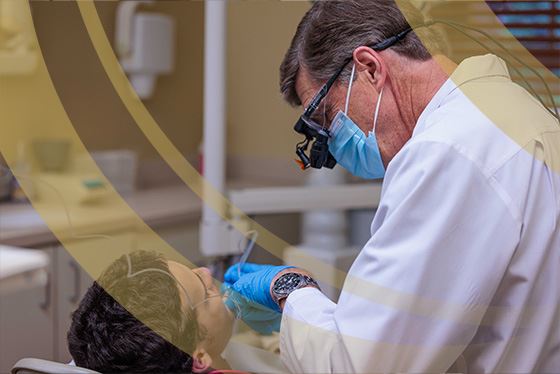
Buckhead Dental Bridges
At Premier Dental Care of Buckhead, we understand the importance of maintaining the health of your teeth. During routine checkups, we always evaluate your teeth for signs of decay or damage. If a tooth is missing due to these problems, we can discuss replacement options. Typically, a dental implant or dental bridge will be recommended to replace missing teeth. Oftentimes, implants are the ideal option, but bridges provide great esthetics and longevity, as well.
Call (404) 491-7711 or contact us online today to schedule an appointment and learn more about dental bridges in Buckhead.
What are Dental Bridges?
Dental bridges are handmade restorations to recreate your missing teeth and restore function and esthetics. They typically involve a small amount of preparation of the teeth on either side of the missing tooth. These teeth and the missing teeth will be restored with crowns fused together to create a dental bridge.
Types of Dental Bridges
- Porcelain Bridges – Porcelain bridges provide the best esthetics but are mostly only used for bridges on the front teeth. Discuss your goals with your dentist so they can help you decide if this material will work well for you.
- Porcelain to Metal Bridges – These are the most common types of bridges. They provide excellent esthetics combined with the strength and durability of precious metals. They are typically recommended for bridges for back teeth or longer span bridges.
- Gold Bridges – The most durable material in the mouth is gold. While many decide against using gold for esthetic reasons, it can be an excellent choice to provide the best durability and longevity.
What Happens During a Dental Bridge Appointment?
One of our doctors will see you after diagnosing a need for a dental bridge and creating a treatment plan. Sometimes, additional work is needed to create models and a wax up of the missing teeth to be replaced. Once completed, they will see you for a preparation appointment. The teeth will be numbed and prepared. Oftentimes, a dental filling will be placed at the same time, known as a “core buildup.” Once prepared, an impression of the teeth will be completed, and a temporary bridge will be placed. Our ceramist will meet with you to discuss the material and appearance you desire. Lastly, you will return in a month to have the final dental bridge delivered. This is typically a shorter appointment that may not require any numbing.
Aftercare for Dental Bridges
With most dental bridges, you can function on them right away, keeping in mind that your teeth and gums may be numb for several hours. It’s important to continue to brush and floss around your dental bridge to prevent new decay from starting. Dental bridges require extra care to floss around the area where teeth are missing. It’s possible that you may experience some initial sensitivity after your teeth are restored and your mouth adjusts to some changes. We will continue to monitor all restorations at your checkup appointments to make sure they are all doing well. Call us today to see how we can help restore your mouth to give you the smile you want!
Frequently Asked Questions
Will a dental bridge change the way I speak?
Initially, you might experience a slight change in your speech as you adjust to the new bridge. However, this is usually temporary. With practice and time, your speech will return to normal. If you experience persistent issues, consult your dentist for adjustments.
Is the dental bridge procedure painful?
The procedure is typically performed under local anesthesia, so you should not feel any pain during the process. Some patients may experience mild soreness or sensitivity after the procedure, which can be managed with over-the-counter pain relievers.
How soon after tooth extraction can I get a dental bridge?
It's usually recommended to wait for the extraction site to heal completely before placing a dental bridge. This can take several weeks or even months, depending on the individual's healing process. We will assess your healing progress and determine the appropriate timing for the bridge.
Can I eat normally with a dental bridge?
Yes, you can eat normally with a dental bridge, but it's advisable to avoid excessively hard or sticky foods that could damage the bridge. Chewing on both sides of your mouth evenly will also help distribute pressure and prolong the bridge's lifespan.






